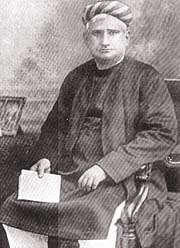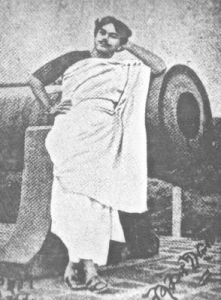Bangla Literature goes back to at least the seventh century with three improvement periods are: ancient, medieval, and modern period from 650-1200, medieval period from 1200-1800, and the cutting edge period from 1800 to the present.
While the historical backdrop of Bangladeshi and Bengali writing backpedals many years. It is impossible (and undesirable) to particular the literary trends of the two Bengals during the pre-independence period. Post independent Bangladesh has conceived its own particular individual arrangement of litterateur and writing.
The soonest available example of Bengali literature is around a thousand years of age. During the medieval period Bengali writing grew significantly with the support of Muslim rulers, especially Sultan Alauddin Hussein Shah, his child Nasrat Shah and president, paragal khan, in advancing Bangla writing is uncommonly essential. The 45-year tenet of the Hussein Shah regimes (1493-1538) in Bengal not just prompted political, social and cultural thriving, additionally supported language and literature.
The soonest available example of Bengali literature is around a thousand years of age. During the medieval period Bengali writing grew significantly with the support of Muslim rulers, especially Sultan Alauddin Hussein Shah, his child Nasrat Shah and president, paragal khan, in advancing Bangla writing is specially essential. The 45-year tenet of the Hussein Shah regimes (1493-1538) in Bengal not just prompted political, social and cultural thriving, additionally supported language and literature.
A few Muslim writers were Chand Kazi (fifteenth century), and Afzal Ali (seventeenth century). Chand Kazi was the Kazi of Nabadwip under Sultan Hussein Shah (1493-1519). Syed Sultan (c 1550-1648, Nabi Bangsha, Shab-i-Miraj, Rasulbijay, Ofat-i-Rasul, Jaykum Rajar Ladai, Iblisnama, Jnanachautisha, Jnanapradip, marfati gan, padavali) Sheik Paran (c 1550-1615, Nurnama, Nasihatnama) Haji Muhammad (c 1550-1620, Nur Jamal, Suratnama) Nasrullah Khan (c 1560-1625, janganama, Musar Sawwal, Shariatnama, Hidayitul Islam) Muhammad Khan (c 1580-1650, Satya-Kali-Vivad-Sangbad, Hanifar Ladai, Maktul Husein) Syed Martuza (c 1590-1662, Yog-Kalandar, padavali) Sheik Muttalib (c 1595-1660, Kifayitul-Musallin) Mir Muhammad Shafi (c 1559-1630, Nurnama, Nurkandil, Sayatnama) Abdul Hakim (c 1620-1690, Lalmati-Sayfulmulk, Nurnama.) Artists who formed somewhere around 1600 and 1757 incorporate nawajis khan, Qamar Ali, Mangal (Chand), Muhammad Yakub, Abdul Nabi, Muhammad Uzir Ali, Muhammad Fasih, Fakir Garibullah, Sheik Mansur, Sheik Sadi and Heyat Mamud. Syed Sultan’s Nabibangsa, Muhammad Khan’s Maktul Husein and sheik chand ‘s Rasulbijay are known as Islamic Puranas.
Shah Muhammad Sagir (c 1400) was one of the soonest of the Bengali Muslim poets. Despite the fact that his sentiment Yusuf-Zulekha contains no mark piece recognizing him, he is for the most part viewed as being from East Bengal as duplicates of his sonnets have been found in the Chittagong-Comilla-Tripura district. Other epic poets incorporate Jainuddin, Muzammil, Sheik Faizullah, Daulat Uzir Bahram Khan. Jainuddin got to be renowned with Rasulbijay, his just epic. Muzammil got to be celebrated for the most part for his three graceful works: Nitishastravarta, Sayatnama and Khanjancharita.
In the time of 1700-1800 the fundamental abstract preparations of the period include padavali and mangalkavya. Padavali journalists in the eighteenth century incorporate Narahari Chakravarti, Natavar Das, Dinabandhu Das, Chandrashekhar-Shashishekhar and Jagadananda. Their poems were, on the other hand, more brimming with ornamentation than importance. Mangalkavya Versions of Chandimangal kept on being made, an imperative variant being that by Ramchandra Yati composed 1766-67.
Bharatchandra, maybe the best writer of the eighteenth century, composed Nagastak and Gangastak in Sanskrit and, in Bangla, Satyanarayaner panchali, Rasamanjari and additionally Annadamangal. Some different artists of this class were Radhakanta Mishra (maybe the first artist of Kolkata), Kavindra Chakravarti and Nidhiram Acharya of chittagong. The main Bangla books were those by Christian preachers. Dom Antonio’s Brahmin-Roman-Catholic-Sangbad, for instance, was the first Bangla book to be printed towards the end of the seventeenth century.

Raja Rammohan Roy (1772/4-1833) likewise added to the further improvement of Bangla prose. Some of his extraordinary books are interpretations: Vedanta Grantha (1815), Vedantasar (1815), Kenopanisad (1816) and Ishopanisad (1816). His unique books incorporate Bhattacharyer Sahit Vichar (1817), Gosvamir Sahit Vichar (1817), Sahamaran Virodhi Pustika, Sahamaran Visay (1828), Gaudiya Vyakaran ( 1833) and so forth. The fundamental topics of these books are religious and pedantic. The principal current Bangla author was Bankimchandra Chattopadhyay (1838-1894) whose fourteen books incorporate Durgeshnandini, Kapalkundala, Krishnakanter Will, Bisbrksa and Ananadamath.
In the nineteenth century, Prominent among them were Mir Mosharraf Hossain (1847-1912), Moulvi Mohammad Naimuddin (1832-1907), Dad Ali (1852-1936), Kaikobad (1857-1951), Sheik Abdur Rahim, Reazuddin Ahmad Mashadi, Mozammel Huq, Munshi Muhammad Reazuddin Ahmad (1862-1933), Moulvi Mearajuddin Ahmad (1852-1929), Munshi Muhammad Zamiruddin (1870-1930), Abdul Hamid khan Yusufzai (1864-1924) and Maulana Mohammad Moniruzzaman Islamabadi (1875-1950). Mir Mosharraf Hossain composed about 30 books including books, plays, Satire, verse, musical plays, and articles. His best known written work is, then again, Bisad-Sindhu, in light of the occurrences at Karbala.
The 1st Bangla biography of Prophet Muhammad (Peace be upon him) was composed by Sheik Abdur Rahim. Michael Madhusudan Dutt (1824-1873) started writing in English however soon moved to writing in Bangla by his English readings.

In 1890-1930, Rabindranath Tagore was an superior man who made real commitments to all classifications of Bangla writing. He composed a tremendous scope of rich and different types of poetry, plays, dance dramas, novels, short stories, essays and more than two thousand melodies. In spite of the fact that he was known as “Bissho Kobi” (world artist) and won the Nobel Prize for writing in 1913 for his book of ballads Gitanjali, The most prominent authors of this period was Sharat chandra chattopadhyay (1876-1938), Pramatha Chowdhury (1868-1946), Probhat Kumar Mukhopadhyay (1873-1932).
The pioneer part in presenting ultra-innovation in Bangla poetry was played by Achinta Kumar Sengupta, Buddhadev Bose, Premendra Mitra, Jibanananda das (1899-1954), Sudhindranath dutta (1901-1960), Bishnu de (1909-1982).

In the comparative classification is Kazi Nazrul Islam (1899 – 1976), who was welcome to post-part Bangladesh as the National Poet and whose work rises above sectarian limits. Revered by Bengalis both in Bangladesh and West Bengal, his work incorporates 3,000 tunes, referred to as both as nazrul geeti and “nazrul sangeet”. He is frequently called the “rebel poet” predominantly in view of his most famous and jolting poem “Bidrohi” or “The Rebel”, furthermore due to his solid sensitivity and backing for progressive exercises prompting India’s freedom from British Rule. His songs and poems were regularly utilized during the Bangladesh Liberation War too. In spite of the fact that he is recognized as the revolutionary artist, Nazrul viably contributed in all extensions of writing. He composed poems that light the flame against imbalance or treachery and in the meantime is referred to for his strong sentimental lyrics also. He composed a great deal of Islami Ghazals and in the same time composed various Shyama Sangeet (songs for the Hindu Mother Goddess, Kali). Nazrul was not just an artist, he was essayist, performer, columnist and thinker. He was sent to prison for his artistic conflicts with the then winning British principle.
In the time of 1947-1971 extraordinary writers were Mohammad Najibar Rahman (1860-1923), Ekramuddin ahmad (1872-1940), Roquiah Sakhawat Hossain (1880-1932), Kazi Imdadul Huq (1882-1926), Shahadat hossain (1893-1953), Golam Mostafa (1897-1964), Abul Hussain (1896-1938), Kazi Abdul Wadud (1894-1970), Mohammad Akram Khan, Dr Muhammad Shahidullah (1885-1969), Dr Muhammad Lutfar Rahman (1889-1936), S Wazed Ali (1890-1951), Ibrahim Khan (1894-1978), Nurunessa Khatun Vidyavinodini (1894-1975), Sheik Muhammad Idris Ali (1895-1945), Akbaruddin (1895-1979), Mohammad Barkatullah (1898-1974), Abul Kalam Shamsuddin (1897-1978), Qazi Motahar Hossain, Abul Mansur Ahmed (1898-1979), Benajir Ahmed (1903-1983), abul fazal (1903-1983), Motaher Hossain Chowdhury (1903-1956), Muhammad Mansuruddin (1904-1987), Abdul Quadir (1906-1984), Bande Ali Miah (1906-1979), Mahmuda Khatun Siddiqua (1906-1977), Habibullah Bahar Choudhury (1906-1966), Mahbub-ul Alam (1906-1982), Dr Muhammad Enamul Huq, Sufi Motahar Hosen (1907-1975), Begum Sufia Kamal (1911-1999) and Raushan Yazdani (1917-1967).
The liberation war of 1971 and the freedom of Bangladesh imprints the third period of the writing of this area. Fiction The fiction of this stage records the adventure of the liberation war, the awful face of the war, the fantasy of a free and libertarian Bangladesh and from there on the acknowledgment of freedom.

Leave a Reply